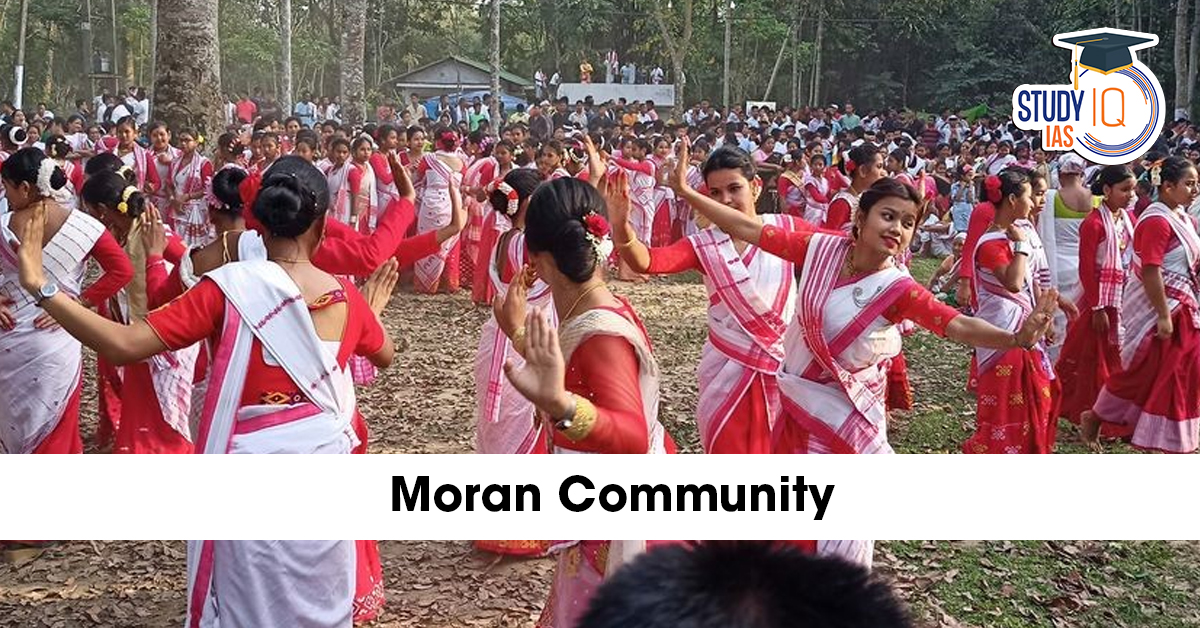Table of Contents
Context: Organisations representing the Moran community in Assam have intensified their push for recognition as a Scheduled Tribe.
About Moran Community
- Distribution: Indigenous tribes of Assam are mainly found in Upper Assam — Tinsukia, Dibrugarh, and Sivasagar.
- History: led the Moamoria Rebellion (1769–1805) against the Ahoms.
- Language & Culture: Earlier spoke The Moran language (related to Dimasa); now largely use Assamese.
- Livelihoods: Dependent on agriculture, fishing, and forest resources along the Brahmaputra valley.
Process of Granting ST Status in India
Constitutional Basis:
- Defined under Article 366(25) – “Scheduled Tribes” are those communities notified under Article 342.
- Article 342(1): The President, after consultation with the Governor of the State/UT concerned, notifies tribes or tribal communities as ST.
- Article 342(2): Only Parliament can include or exclude a community from the ST list by law.
Criteria (not in the Constitution but evolved by the Government/committees)
- Primitive traits / distinctive culture.
- Geographical isolation.
- Shyness of contact with the community at large.
- Backwardness (social and economic).
Procedure
- The proposal originates from the concerned State/UT Government.
- Sent to Ministry of Tribal Affairs (MoTA) → examined with the Registrar General of India (RGI) and National Commission for Scheduled Tribes (NCST).
- If cleared, the proposal goes to the Cabinet Committee.
- Finally, a Bill is introduced in Parliament → amendment to the Constitution (Scheduled Tribes) Order, 1950.
- After passage, the President notifies the inclusion.


 Poompuhar Port: Ancient Sangam-Era Marit...
Poompuhar Port: Ancient Sangam-Era Marit...
 UNESCO World Heritage Sites of India Lis...
UNESCO World Heritage Sites of India Lis...
 Ho Tribe: History, Culture, Language and...
Ho Tribe: History, Culture, Language and...

























